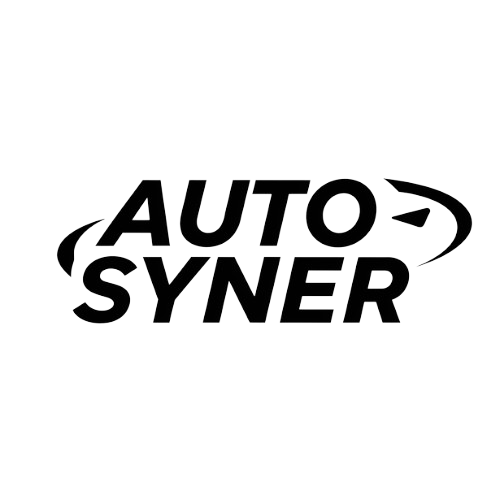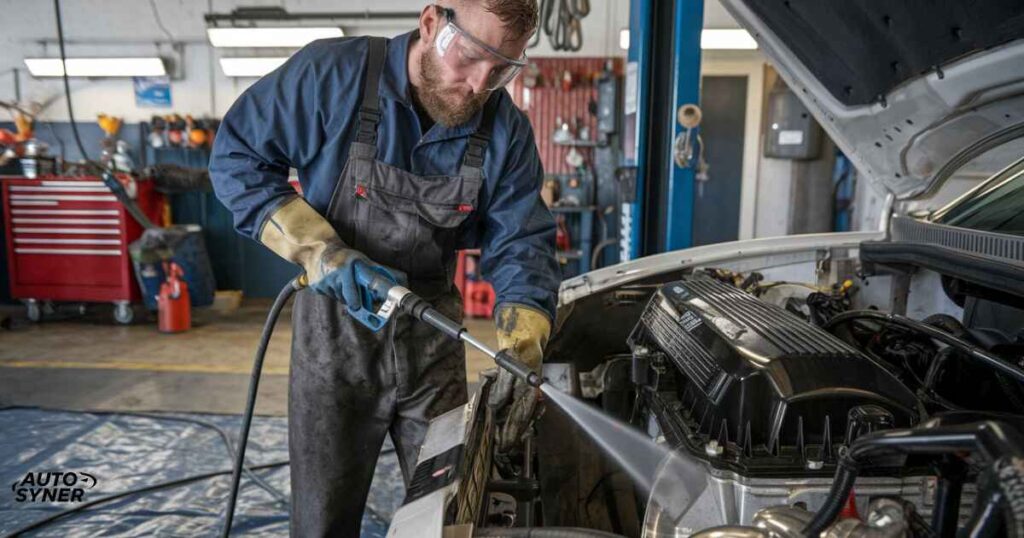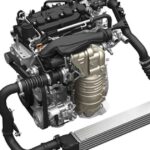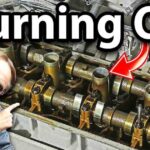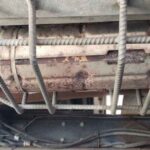A dirty engine isn’t just unsightly – it can lead to decreased performance, overheating, and expensive repairs. Oil and grease buildup traps heat, corrodes components, and masks potential leaks that could signal serious problems. Many car owners avoid cleaning their engines due to fears of damaging electrical components or uncertainty about the proper process.
This guide provides clear, step-by-step instructions for safely cleaning oil and grease from your car’s engine. You’ll learn proven degreasing techniques, essential safety precautions, and professional maintenance tips to keep your engine clean and running efficiently. With the right approach and materials, you can restore your engine’s cleanliness in under an hour.
Safety Precautions and Preparation
Essential Safety Measures Before Starting
Before learning how to clean oil off engine, safety must come first. Always ensure your engine is completely cool – wait at least 2 hours after driving. Disconnect the negative battery terminal (black cable) using a wrench. Work in a well-ventilated area, ideally outdoors. Wear protective gloves and safety glasses to guard against chemicals and debris. Keep a fire extinguisher nearby as an extra precaution. Remove any loose jewelry that could cause electrical shorts. Place a drip pan under the engine to catch runoff.
Gathering Required Materials and Tools
To effectively clean oil off engine, you’ll need these essential items in 2024:
Required Tools:
- Engine degreaser spray
- Garden hose with adjustable nozzle
- Microfiber towels (3-4)
- Soft-bristled brushes (2 sizes)
- Plastic bags and tape
- Heavy-duty gloves
- Safety glasses
- Engine protectant spray
- Clean rags
- Drip pan
Optional:
- Compressed air
- Baking soda solution
- Parts cleaning brush
Protecting Sensitive Components
Proper protection is crucial when cleaning oil off engine components. Cover these sensitive parts with plastic bags and secure with tape:
- Alternator
- Battery and terminals
- Distributor
- Air intake
- Exposed wiring harnesses
- ECU/computer box
- Fuse box
- Spark plug holes
Pay special attention to any cracked or worn wires that could allow water penetration. Double-check all covers are sealed tightly before starting. This protection prevents electrical damage and costly repairs.
Step-by-Step Engine Cleaning Process
Initial Inspection and Debris Removal
Begin by visually inspecting your engine to understand how to clean oil off engine effectively. Check for large debris like leaves, twigs, or paper trapped in the grill and vents. Use compressed air or a soft brush to remove loose materials. Look for oil leaks, damaged hoses, or loose connections – mark these areas for extra attention. Remove any nests or organic matter that could clog the system. A clean workspace makes the entire process safer and more effective.
Degreasing Process
The key to learning how to clean oil off engine is using the right degreaser. Apply a citrus-based or water-based engine degreaser from bottom to top. Start at the lower engine block and work upward, ensuring complete coverage. Let the degreaser sit for:
Light oil/grease: 3-5 minutes Medium buildup: 5-7 minutes Heavy buildup: 7-10 minutes
Avoid petroleum-based degreasers as they can damage rubber components.
Cleaning Techniques
Use these proven methods to remove stubborn oil and grease:
- Gentle circular motions with a soft brush
- Light agitation on heavily soiled areas
- Second degreaser application if needed
- Extra attention to corners and crevices
When learning how to clean oil off engine surfaces, patience is crucial. Don’t use metal brushes or scrapers that could damage components.
Rinsing and Washing
Use a garden hose with low to medium pressure – never a pressure washer. Keep the water stream at a 45-degree angle to prevent forcing water into electrical components. Start rinsing from the top, working downward to avoid recontaminating cleaned areas. Take extra care around covered electrical parts. Continue rinsing until water runs clear with no degreaser residue.
Read This Blog: Engine Brake vs Foot Brake: What Every Driver Must Know in 2024
Drying and Final Steps
After cleaning oil off engine parts, thorough drying prevents corrosion. Use clean microfiber towels to dry all accessible areas. Pay special attention to:
- Crevices and joints
- Around hoses and belts
- Under the hood edges
- Near electrical connections
Run a portable fan for 15-20 minutes to aid drying. Remove all protective covers and reconnect the battery only when completely dry.
Also Read This Blog: Fun Facts About Cars: The Ultimate Guide to Fascinating Automotive Trivia (2024)
Professional Tips and Best Practices
Common Mistakes to Avoid
When learning how to clean oil off engine components, these mistakes can cause serious damage:
- Never use hot water
- Avoid pressure washers
- Don’t clean a warm engine
- Skip harsh chemicals and degreasers
- Never spray directly at electrical parts
- Don’t let water pool in engine bay
- Avoid metal brushes
- Never rush the drying process
Engine Bay Detailing Secrets
Professional detailers use these techniques to achieve showroom results when they clean oil off engine parts:
- Work in sections
- Use multiple brush sizes
- Apply degreaser with foam applicator
- Clean rubber seals separately
- Dress plastic components last
- Polish metal surfaces
- Apply engine protectant coating
Maintenance Schedule
Follow this 2024 engine cleaning schedule:
Regular Driving:
- Basic wipe-down: Monthly
- Full degreasing: Every 6 months
- Deep cleaning: Annually
Heavy Use/Dusty Areas:
- Basic wipe-down: Bi-weekly
- Full degreasing: Every 3 months
- Deep cleaning: Every 6 months
Benefits of Regular Engine Cleaning
Performance Benefits
Regular engine cleaning provides clear performance improvements:
- Better heat dissipation
- Increased fuel efficiency
- Smoother operation
- Reduced strain on components
- Easier maintenance access
- Improved air flow
- Enhanced cooling system function
Learning how to clean oil off engine parts properly helps maintain these benefits long-term.
Prevention of Engine Issues
Regular cleaning prevents common problems:
- Corrosion reduction
- Early leak detection
- Prevention of rubber deterioration
- Reduced risk of electrical issues
- Better component longevity
- Minimized rust formation
- Improved resale value
Regular maintenance in 2024 costs far less than major repairs later.
Frequently Asked Question
How often should I clean my engine?
Clean your engine every 3-6 months, depending on driving conditions. Dusty areas or frequent driving require cleaning every 3 months. For normal conditions, twice a year is sufficient. Monthly basic wipe-downs help maintain cleanliness between deep cleans.
Can I use a pressure washer on my engine?
No, never use a pressure washer on your engine. High-pressure water can damage electrical components, force water into sealed areas, and strip protective coatings. Use a regular garden hose with moderate pressure instead.
What areas should I avoid getting wet?
Protect these components from water:
- Alternator
- Distributor
- Fuse box
- ECU/Engine computer
- Air intake
- Exposed wiring
- Battery connections
- Spark plug holes
How long should I wait before starting the engine after cleaning?
Wait at least 30-45 minutes after cleaning to ensure everything is completely dry. In humid conditions, wait up to 2 hours. Use a fan to speed up drying time. Check all electrical connections before starting.
What’s the best degreaser for heavily soiled engines?
Use citrus-based or water-based degreasers for heavy soil. They’re effective yet safe for engine components. Avoid petroleum-based products as they can damage rubber parts. Always choose products specifically designed for automotive engines.
Is it safe to clean a warm engine?
No, never clean a warm engine. Wait at least 2 hours after running to ensure it’s completely cool. Hot engines can cause burns and create dangerous steam when cleaning products are applied.
Conclusion
Regular engine cleaning is essential for maintaining your vehicle’s performance and longevity. By following proper safety measures and using the right techniques to clean oil off engine components, you can prevent costly repairs and extend your engine’s life.
Make engine cleaning part of your regular maintenance routine. Remember, a clean engine runs cooler, performs better, and helps identify potential problems before they become serious. Take pride in maintaining your engine’s cleanliness – it’s an investment in your vehicle’s future.
